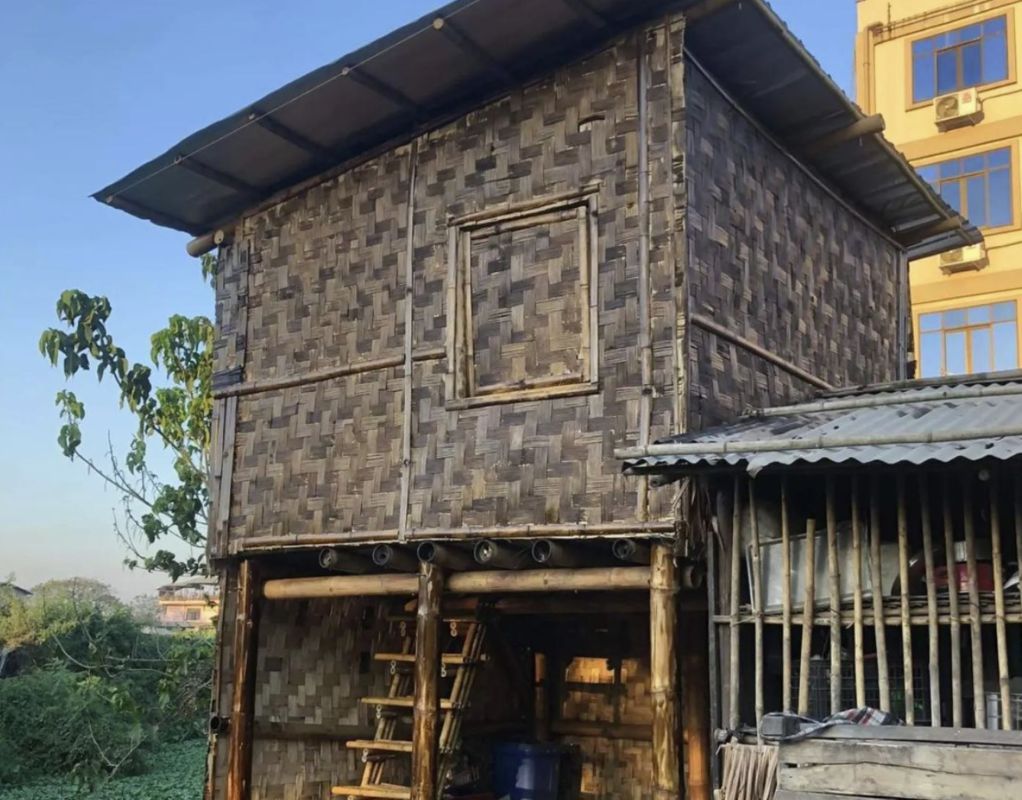A remarkable housing project originating in Myanmar could provide low-cost housing to some of the nation's poorest and most vulnerable residents.
Using locally sourced, abundant, and sustainable bamboo in construction, Housing Now — from architecture studio Blue Temple — addresses key issues facing the nation's population. A tweet from the account for Housing Now (@housingn0w) described the building material.
Why do we use Bamboo as our primary construction material?
— Housing NOW (@housingn0w) December 26, 2022
The species and type of bamboo we are using is abundantly available on the local market. It's a thin type of bamboo that is considered a waste product and is usually not used in construction. pic.twitter.com/BAiQ8tYobk
In a press release, with details shared by Inhabitat, Blue Temple explained that "since the military coup in Myanmar in February 2021, nearly two million people have been internally displaced in the country."
That, coupled with the impact of natural disasters and political instability in the area, has increased the need for emergency housing that can be constructed quickly and cheaply.
Homes can be constructed in under a week and cost as little as $700 — or about the cost of a smartphone.
According to the Climate Change Knowledge Portal, "Myanmar is at risk to several natural hazards, including extreme temperatures, drought, cyclones, flooding and storm surge, and heavy rainfall events."
Most of these weather events are exacerbated by human-related carbon pollution, with the construction industry being one of the biggest offenders.
A United Nations Environment Programme report revealed that the construction sector "accounted for over 34% of energy demand and around 37% of energy and process-related CO2 emissions in 2021."
Bamboo has been used in construction practices for centuries, but the approach from Blue Temple has built on those traditional methods with an entirely new system.
Using bundles of narrow shoots to create a stronger structure, panels for the homes are pre-fabricated in a warehouse and delivered to the necessary location to be assembled. The customer can then customize the finish of the floor, walls, and roof to their desired specifications.
The project has been in the works for three years, with architect Raphaël Ascoli noting in a video on the company's website that the prototype development process saw repeated efforts to create the bamboo structure and small tweaks made along the way to improve safety and stability.
While the cost and speed of construction are a massive breakthrough when it comes to sufficiently sheltering refugees in the country, the process also has important environmental benefits.
Compared to traditional construction materials, bamboo is extremely versatile, abundant locally, and grows quickly. That means it has minimal impact on resource use and waste, and the regional sourcing and construction limits carbon pollution with regard to the transportation of composite parts.
It also benefits local communities, as Inhabitat said residents are trained in the construction process and can earn a source of income while putting the houses together.
As covered in the video, the company is seeking financial contributions to help disadvantaged families, with every $1,500 donation put toward building a house — which will be donated to a family — as well as research and social worker costs, with hopes to soon scale up production.
Blue Temple has also been working on community spaces since its formation in 2017, regenerating urban areas and delivering public-space playgrounds.
blue temple develops interlocking bamboo frames for low-cost building in myanmar https://t.co/sNxXiRii9V
— CésARQ (@cesarqbucio) July 7, 2023
Join our free newsletter for weekly updates on the coolest innovations improving our lives and saving our planet.









